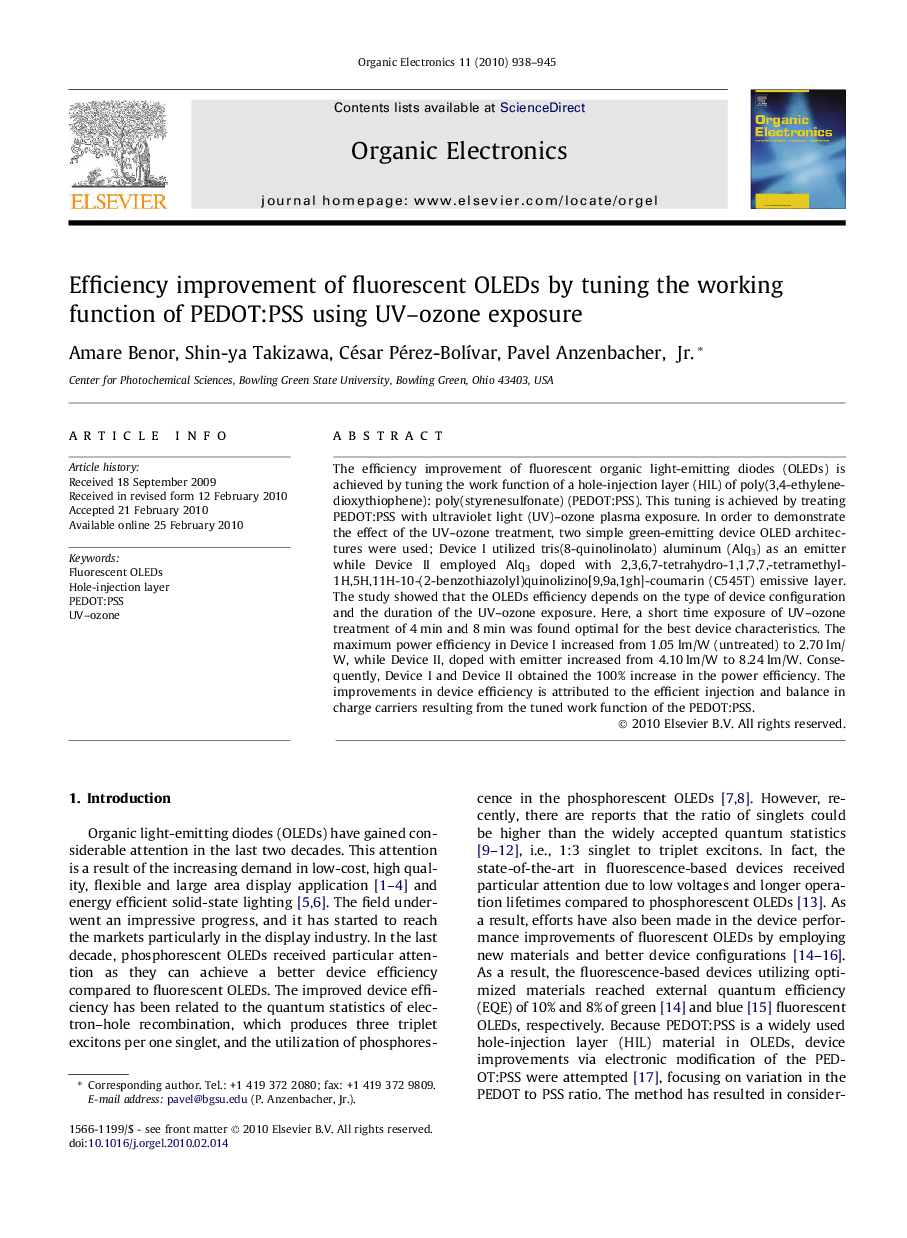| کد مقاله | کد نشریه | سال انتشار | مقاله انگلیسی | نسخه تمام متن |
|---|---|---|---|---|
| 1267944 | 972385 | 2010 | 8 صفحه PDF | دانلود رایگان |

The efficiency improvement of fluorescent organic light-emitting diodes (OLEDs) is achieved by tuning the work function of a hole-injection layer (HIL) of poly(3,4-ethylenedioxythiophene): poly(styrenesulfonate) (PEDOT:PSS). This tuning is achieved by treating PEDOT:PSS with ultraviolet light (UV)–ozone plasma exposure. In order to demonstrate the effect of the UV–ozone treatment, two simple green-emitting device OLED architectures were used; Device I utilized tris(8-quinolinolato) aluminum (Alq3) as an emitter while Device II employed Alq3 doped with 2,3,6,7-tetrahydro-1,1,7,7,-tetramethyl-1H,5H,11H-10-(2-benzothiazolyl)quinolizino[9,9a,1gh]-coumarin (C545T) emissive layer. The study showed that the OLEDs efficiency depends on the type of device configuration and the duration of the UV–ozone exposure. Here, a short time exposure of UV–ozone treatment of 4 min and 8 min was found optimal for the best device characteristics. The maximum power efficiency in Device I increased from 1.05 lm/W (untreated) to 2.70 lm/W, while Device II, doped with emitter increased from 4.10 lm/W to 8.24 lm/W. Consequently, Device I and Device II obtained the 100% increase in the power efficiency. The improvements in device efficiency is attributed to the efficient injection and balance in charge carriers resulting from the tuned work function of the PEDOT:PSS.
Journal: Organic Electronics - Volume 11, Issue 5, May 2010, Pages 938–945